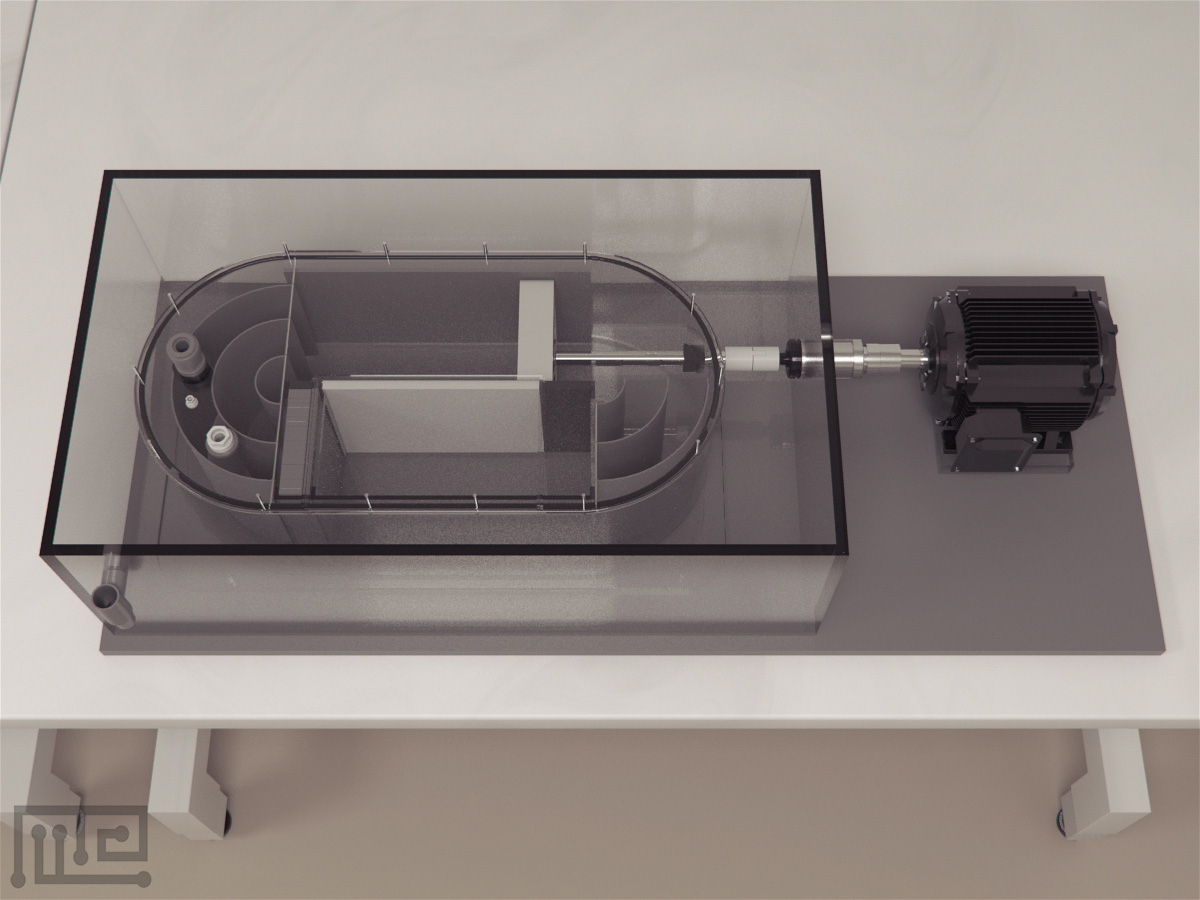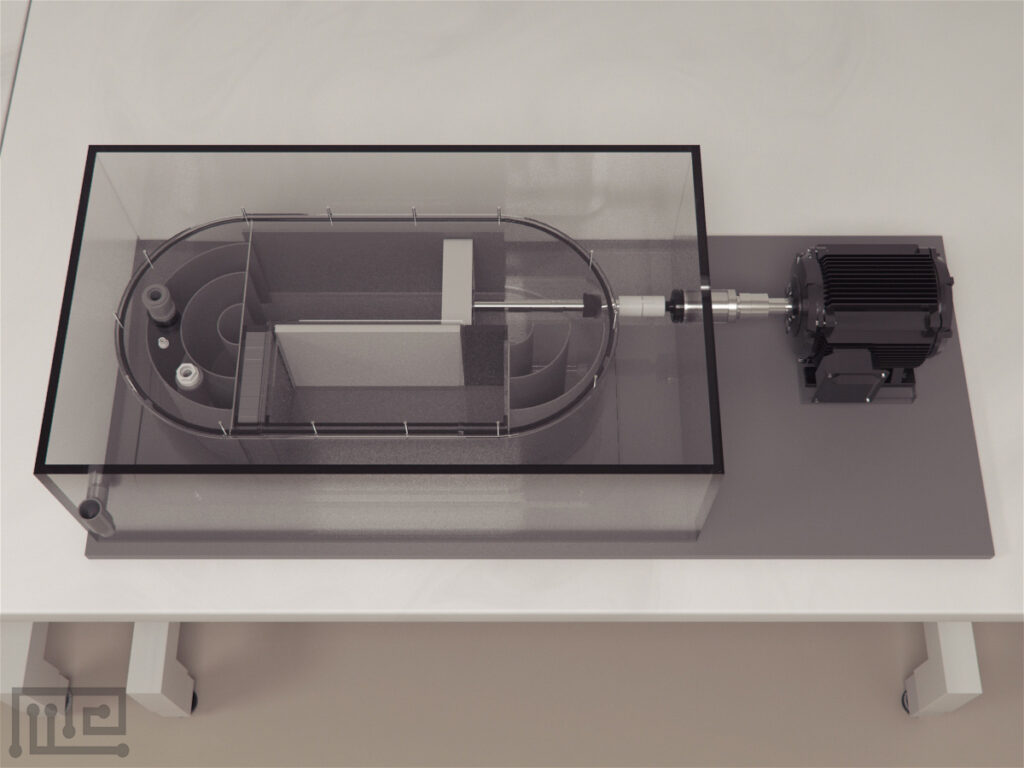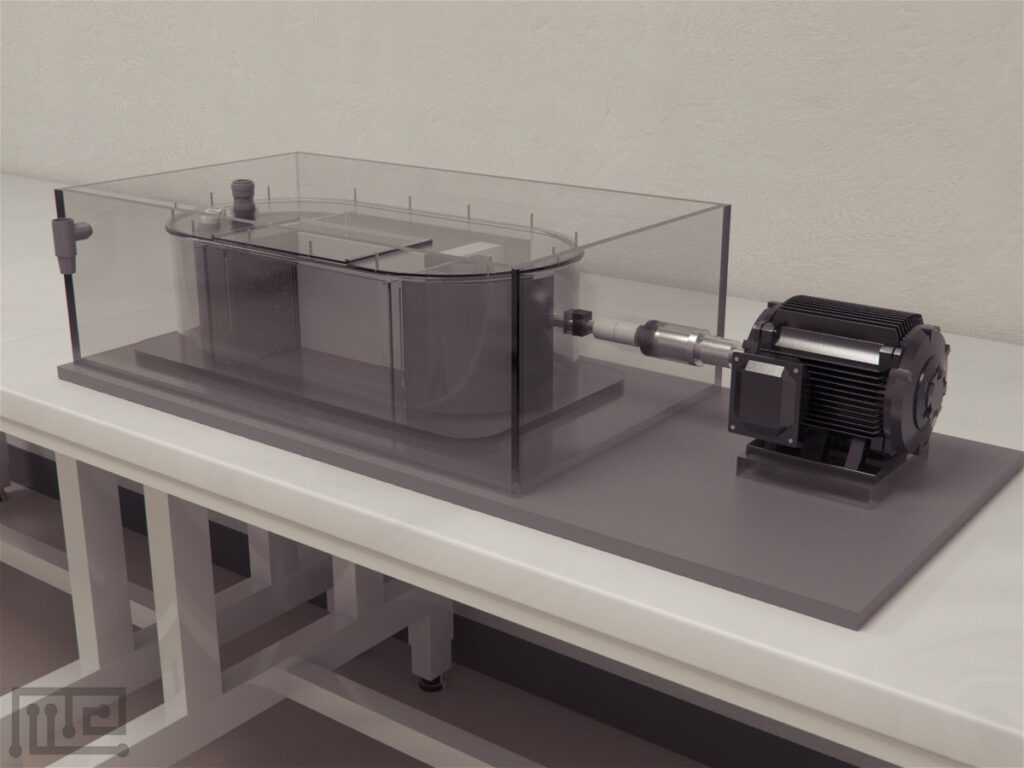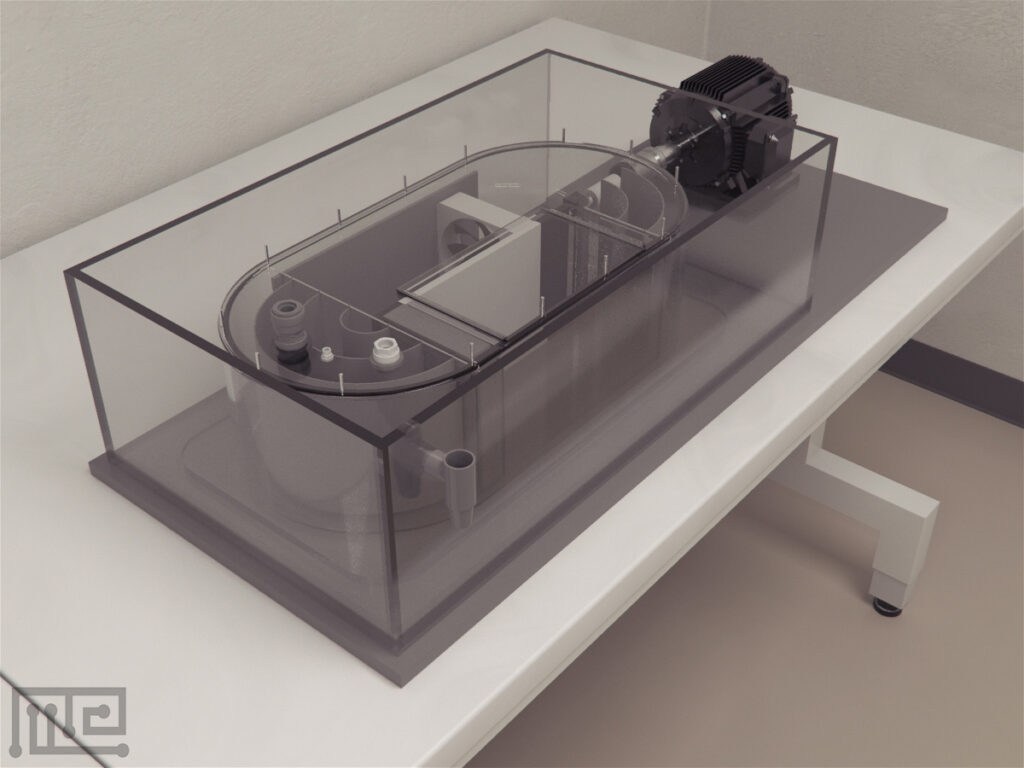The Zebrafish Swim Tunnel consists of a temperature buffer tank, propeller, test section and an Ac motor.
For the test, fish were placed in a swim tunnel with an adjustable flow that forced fish to swim to maintain their position. The test section was large enough to allow zebrafish to perform various swimming gaits.
During the test, water temperature was maintained at acclimation temperature (28 °C). Zebrafish were tested under infrared light to reduce any visual disturbances that could affect swimming. An infrared camera and high-speed cameras were mounted above the swim tunnel to record the swimming tests.
Mazeengineers offer the Zebrafish Swim Tunnel.
Need tracking software?

CONDUCTVISION:
Behavorial Analysis of the Future
Highly advanced AI Technology designed to analyze only the most rodent behavorial movements.
Price & Dimensions
Zebrafish Swim Tunnel
$ 4990
+S&H- Swim tunnel max volume: 6L3
- Length of test section: 30cm
- Width of test section: 10cm
- Height of test section: 20cm
- Minimum-maximum velocity: 4-40 cm/second (can be upgraded to 4-55 cm/s if required, please enquire)
Documentation
Introduction
The Zebrafish Swim Tunnel is a behavioral apparatus to study aging and aging interventions in zebrafish. Different animal models have been used to study aging, such as rodents (Peinado et al., 2011), worms (Ni & Li, 2010), flies (Brandt & Vilcinskas, 2013), and fish (Gilbert, Zerulla, & Tierney, 2014). Among these models, the zebrafish has emerged as an effective model to study aging as aging phenotypes of the zebrafish correlate well with human aging phenotypes (Gilbert, Zerulla, & Tierney, 2014). The studies have shown that exercise can be used as an effective aging intervention to mitigate the phenotypes of aging not only in humans but also in zebrafish (Koopman & Van Loon, 2009; Gilbert, Zerulla, & Tierney, 2014).
The Zebrafish Swim Tunnel is an effective apparatus to study exercise intervention on the swimming performance of the zebrafish. It consists of a rectangular buffer tank with a tunnel-like test area provided with an electric motor operated propeller. The Zebrafish Swim Tunnel task involves exercise training of the subjects by compelling them to swim against increased water flow. The subjects are then observed for improvement in swimming performance (Gilbert, Zerulla, & Tierney, 2014). The Zebrafish Swim Tunnel can be used to study the age, senescence, and physical performance-related research in the zebrafish.
Other apparatuses to study different behaviors in the zebrafish includes the Zebrafish Y Maze, the Zebrafish Two Problem T Maze, the Zebrafish Sociability Chamber, the 5-Choice Chamber and, the 3-Choice Chamber.
Equipment and Apparatus
The Zebrafish Swim Tunnel consists of a transparent rectangular tank with a capacity of 10 liters and a velocity range of 4-35cm/s. Inside the tank, there is a transparent tunnel-shaped test area (30 cm in length x 10 cm in width and 10 cm in height). The test area is provided with a propeller connected to an AC motor and an electronic controller. The Electronic controller controls the flow speed of the water.
Training Protocol
Thoroughly clean the apparatus before each trial. Properly lit the apparatus. Conduct trials under UV light to avoid unsolicited visual stimuli. Maintain the temperature at 28 ˚C while conducting the trial. The recording and tracking software like the Nodulus Ethovision or ANY-Maze can be used to assist with observations.
Habituation
Place the subject in the Zebrafish Swim tunnel and allow it to swim at a low flow speed of 4.5 cm s-1 for 30 minutes.
The Endurance Swim tunnel task
After habituation, start the Endurance Swim Tunnel task. Gradually increase the water’s flow speed by 4.5 cm s-1 in 10 steps until the subject stops swimming and seems to be forced to the end of the test area for 5 s. Now allow the subject to recover at 4.5 cm s-1 flow speed for 45 min. Conduct 1 trial per week for 4 consecutive weeks.
The Sprint Swim tunnel task
Increase the flow speed of the water rapidly by 4.5 cm s-1 in 1 step. Stop the trial when the subject stops swimming and seems to be forced to the end of the test area for 5 s. Now allow the subject to recover at 4.5 cm s-1 flow speed for 15 min. Conduct 1 trial per week for 4 consecutive weeks.
Literature Review
Investigating the impact of age and exercise on the swimming behavior of the zebrafish
Gilbert, Zerulla & Tierny (2013) investigated the impact of age on swimming behavior in zebrafish. The study subjects were divided into three groups: the young group (n=7), the middle-aged group (n=7), and the old group (n=7). The subjects were first habituated and then trained through the Endurance Swim Tunnel Task. The subjects were then subjected to the Sprint Swim Tunnel task in the Zebrafish Swim Tunnel apparatus. The results of the study showed a decrease in endurance (p<0.001) and the sprint performance (P<0.001) with an increase in the age of the subjects. It was observed that exercise training of the subjects through the Endurance Swim Tunnel task improved swimming performance in the young (p<0.001) and middle-aged group (0.001); however, it was not observed in the older group. It was observed that training improved tail beat amplitude in all age groups (p<0.001). The turning frequency of all the groups decreased with increased age (p<0.001); however, it was not changed with training. The results of this study concluded that the Zebrafish performance and trainability decrease with an increase in age.
Data Analysis
- Number of tail beats of the subject per second
- Tail beat frequency
- Tail beat amplitude
- Number of times subject turns per min
- Turning frequency
Strengths and Limitations
Strengths
The Zebrafish Swim Tunnel task is easy to perform and requires minimum pretraining of the subjects. The apparatus requires minimum handling of the subjects causing minimum stress to the subjects. The water flow speed in the apparatus can be changed as required. The water temperature of the Zebrafish tunnel can be maintained with the help of a temperature buffer tank. The Zebrafish Swim tunnel is a validated task to study physical ability and swimming performance in the zebrafish.
Limitations
The presence of unsolicited stimuli may alter the observations. The task performance is time-consuming. The endurance training causes fatigue to the subjects, which may lead to stress; however, the provision of recovery time may reduce stress. The factors such as sex, size, age, and the strain of the subject may affect the observations.
Summary
- The Zebrafish Swim Tunnel is a behavioral apparatus to study the aging and exercise in the zebrafish.
- The apparatus consists of a rectangular temperature buffer tank along with a tunnel-shaped test area inside it.
- The apparatus also consists of a propeller connected with AC and controlled by and electronic motor.
- The Zebrafish Swim Tunnel task involves increasing the water flow speed in steps to train the subjects for endurance, followed by a sprint test.
- The task performance is easy and requires minimum pretraining of the subjects.
- The Zebrafish Swim Tunnel is a validated model and can be used to study the age and physical performance-related research in the zebrafish.
References
- Brandt, A., & Vilcinskas, A. (2013). The Fruit Fly Drosophila melanogaster as a Model for Aging Research. Advances in biochemical engineering/biotechnology, 135, 63–77. https://doi.org/10.1007/10_2013_193
- Gilbert, M. J., Zerulla, T. C., & Tierney, K. B. (2014). Zebrafish (Danio rerio) as a model for the study of aging and exercise: physical ability and trainability decrease with age. Experimental gerontology, 50, 106–113. https://doi.org/10.1016/j.exger.2013.11.013
- Koopman, R., & van Loon, L. J. (2009). Aging, exercise, and muscle protein metabolism. Journal of applied physiology (Bethesda, Md. : 1985), 106(6), 2040–2048. https://doi.org/10.1152/japplphysiol.91551.2008
- Ni, Z., & Lee, S. S. (2010). RNAi screens to identify components of gene networks that modulate aging in Caenorhabditis elegans. Briefings in functional genomics, 9(1), 53–64. https://doi.org/10.1093/bfgp/elp051
- Peinado, J. R., Quirós, P. M., Pulido, M. R., Mariño, G., Martínez-Chantar, M. L., Vázquez-Martínez, R., Freije, J. M., López-Otín, C., & Malagón, M. M. (2011). Proteomic profiling of adipose tissue from Zmpste24-/- mice, a model of lipodystrophy and premature aging, reveals major changes in mitochondrial function and vimentin processing. Molecular & cellular proteomics : MCP, 10(11), M111.008094. https://doi.org/10.1074/mcp.M111.008094




